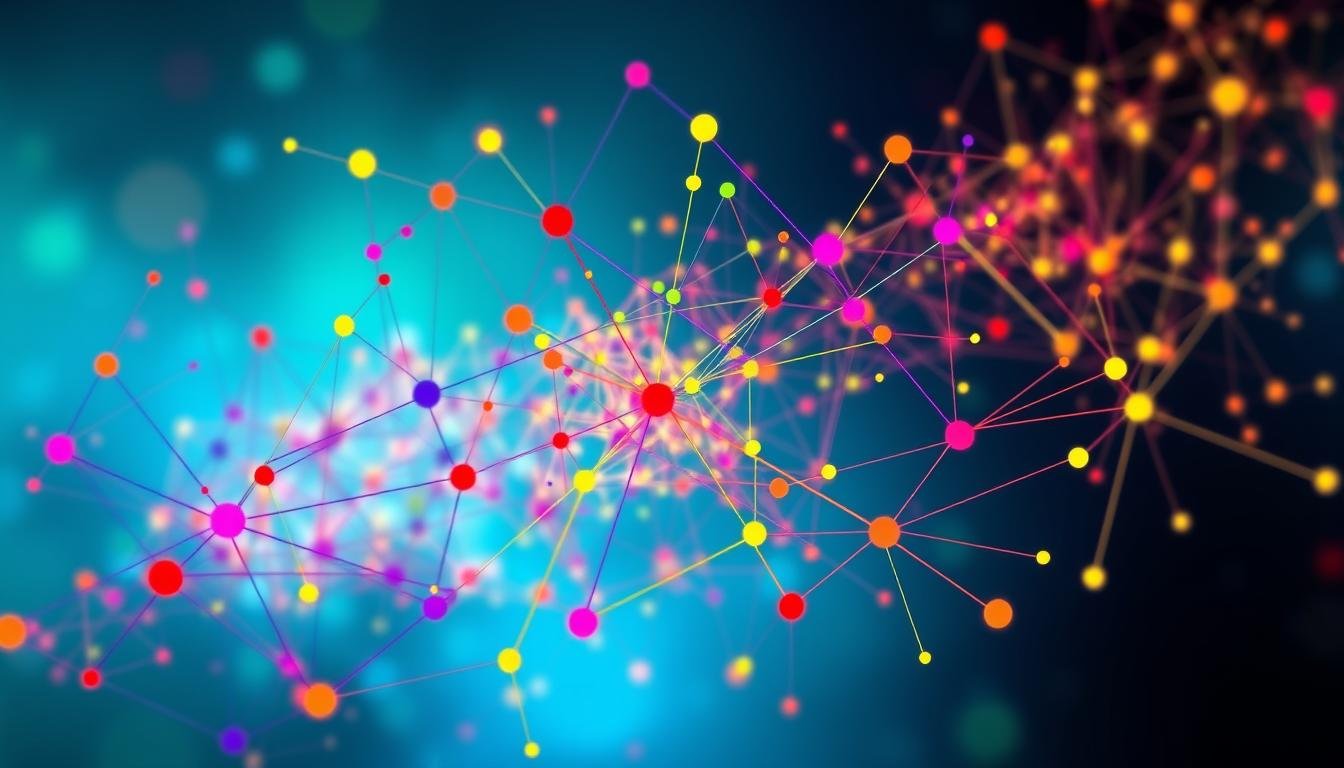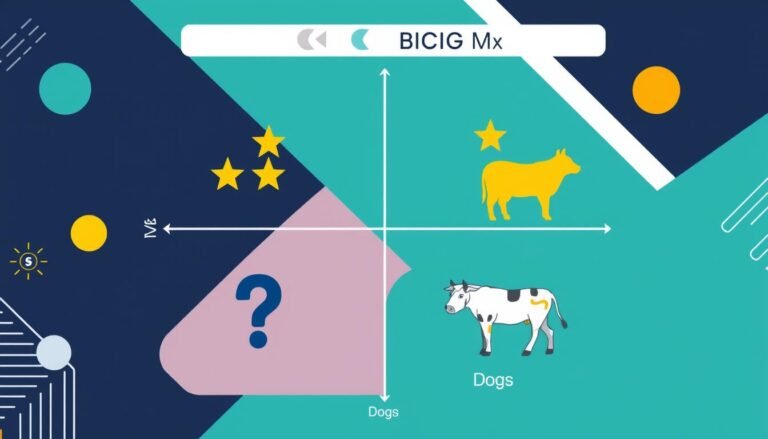Understanding the Basics of Network Theory
Have you ever thought about how simple connections between people, devices, or ideas can create complex systems? Network Theory helps us understand this. It’s key in many fields like computer science, sociology, and biology.
This article will give you a deep look into Network Theory. We’ll focus on important parts like nodes, edges, and how they connect. You’ll see how basic rules help us use Network Theory in things like electrical circuits and social networks. By the end, you’ll be ready for more detailed topics.
Key Takeaways
- Network Theory provides a structured way to analyze complex systems through connections.
- Understanding basic components like nodes and edges is essential for deeper analysis.
- Applications span various fields, influencing areas from sociology to computer science.
- Key laws such as Kirchhoff’s are foundational to comprehending electrical networks.
- Advanced concepts of Network Theory inform design, governance, and management strategies.
- Real-world implications of Network Theory improve our understanding of social interactions and supply chains.
What is Network Theory?
Network Theory explores how different parts connect and interact with each other. It helps us understand how networks work in various areas. This knowledge is key for studying many subjects.
Definition and Key Concepts
At its core, Network Theory looks at nodes and edges. Nodes are individual parts, and edges show how they connect. These connections can be strong, like deep friendships, or weak, like knowing someone casually.
Understanding these connections is crucial. Key concepts like reciprocity and similarity help us see how networks work. These ideas are vital for both social and business networks.
Importance of Network Theory in Various Disciplines
Network Theory is vital in many fields, like sociology, biology, and computer science. In sociology, it helps study how people connect and interact. In biology, it helps understand how living things interact.
In computer science, it improves how we communicate online. As we use the internet more, Network Theory proves its worth. It helps us understand complex systems and their effects on our world.
Core Components of Network Theory
Understanding Nodes and Edges is key to network theory. These elements are the foundation of any system, whether it’s tech, social, or transport. Nodes are the unique parts, like computers or people. Edges show how these parts connect. This helps us study networks effectively.
Nodes and Edges Explained
In network theory, Nodes and Edges are crucial. Nodes can be people, devices, or system parts. Edges show how these nodes interact, which is vital for understanding complex systems. They help us see how information moves or resources flow within a network.
Types of Networks and Their Characteristics
There are many Types of Networks, each with its own traits. These include:
- Directed vs. Undirected Networks: Directed networks have one-way connections. Undirected networks have mutual connections.
- Weighted vs. Unweighted Networks: Weighted networks show the strength of connections. Unweighted networks treat all connections the same.
- Bipartite vs. Non-bipartite Networks: Bipartite networks have two types of nodes. Non-bipartite networks mix different types together.
These types affect how networks work. For example, transportation networks use this to make routes better and cut down travel time.
| Type of Network | Description | Application Examples |
|---|---|---|
| Directed | Connections have a specific direction. | Social media platforms, web pages linking |
| Undirected | Connections are mutual. | Friendship networks, geographical collaborations |
| Weighted | Edges have varying strengths. | Transport logistics, trade networks |
| Unweighted | All connections are treated equally. | Simple friendship diagrams, basic internet mappings |
| Bipartite | Consists of two distinct sets of nodes. | Job applications and candidate networks |
| Non-bipartite | Merges multiple node types into one set. | General social networks and intranet systems |
Network Theory in Social Networks
Network theory is key to understanding social networks. It helps us see how people, groups, or organizations connect and interact. By using social network analysis, researchers can understand the complex ways these interactions work. This shows us the social forces that shape behavior and outcomes.
Understanding Social Network Analysis
Social Network Analysis (SNA) is a powerful tool for studying social interactions. It uses math and stats to map out relationships in social networks. This helps spot important people and groups, showing us how communities work and their structures.
Early SNA looked at how social connections affect people and groups. Studies like those by Isba et al. (2017) show how it has grown and is used in fields like sociology and anthropology.
Applications of Network Theory in Social Settings
Network Theory has many uses in real life. For example, good teamwork in healthcare teams can lead to better patient care, as seen in studies by Baker et al. (2006) and Weller et al. (2014). These findings are also backed by Nimmon and Stenfors-Hayes (2016), which looked at power in doctor-patient talks.
Understanding these relationships helps improve communication and teamwork. This is crucial for places that need to work well together, like hospitals.
Looking at how teams work together, as Gittell et al. (2008) did, shows how social networks affect job satisfaction and quality of care in nursing homes. Janss et al. (2012) also looked at how power and conflict in teams affect team performance.
Network Theory also connects with fields like political science and physics. Since the 1990s, thanks to scholars like Duncan J. Watts and Albert-László Barabási, the methods have gotten better. They now help us understand both online and offline social networks.
Applications of Network Theory
Network Theory has a big impact across many fields. It helps make computers work better and helps us understand living things. In computer science, it’s all about making networks run smoothly. This means making sure data moves fast, networks stay up, and resources are used well.
Algorithms like Dijkstra’s Algorithm and the Max-Flow Min-Cut Theorem are key. They help solve problems with connections and flow. This makes communication faster and IT systems work better.
Network Dynamics in Computer Science
Computer networks use network theory to find the best paths for data. Social media uses it to share updates fast and keep users engaged. These examples show how network theory changes how we handle data, making things more connected and quick.
Implications in Biological Systems
In biology, network theory is a big help. Biologists use it to study complex networks like how proteins work together or how the body’s processes connect. This helps them understand diseases better and find new treatments.
This approach also leads to network medicine. It looks at diseases as a whole, seeing how different parts of the body are connected. This can lead to new ways to fight diseases.
Source Links
- 6.061 Class Notes, Chapter 1: Review of Network Theory
- Network Theory in the Public Sector: Building New Theoretical Frameworks
- 7 Ways Network Theory Is Reshaping Supply Chain
- What You Need to Know About Network Theory
- Network theory
- Network Theory
- Network Theory – Quick Guide
- Network Theory
- Network theory for better PCB Design and Development | Sierra Circuits
- Social Network Theory in Interprofessional Education: Revealing Hidden Power
- Social network
- Real-life applications of network theory – GeeksforGeeks
- Network Theory: Principles, Applications | StudySmarter







